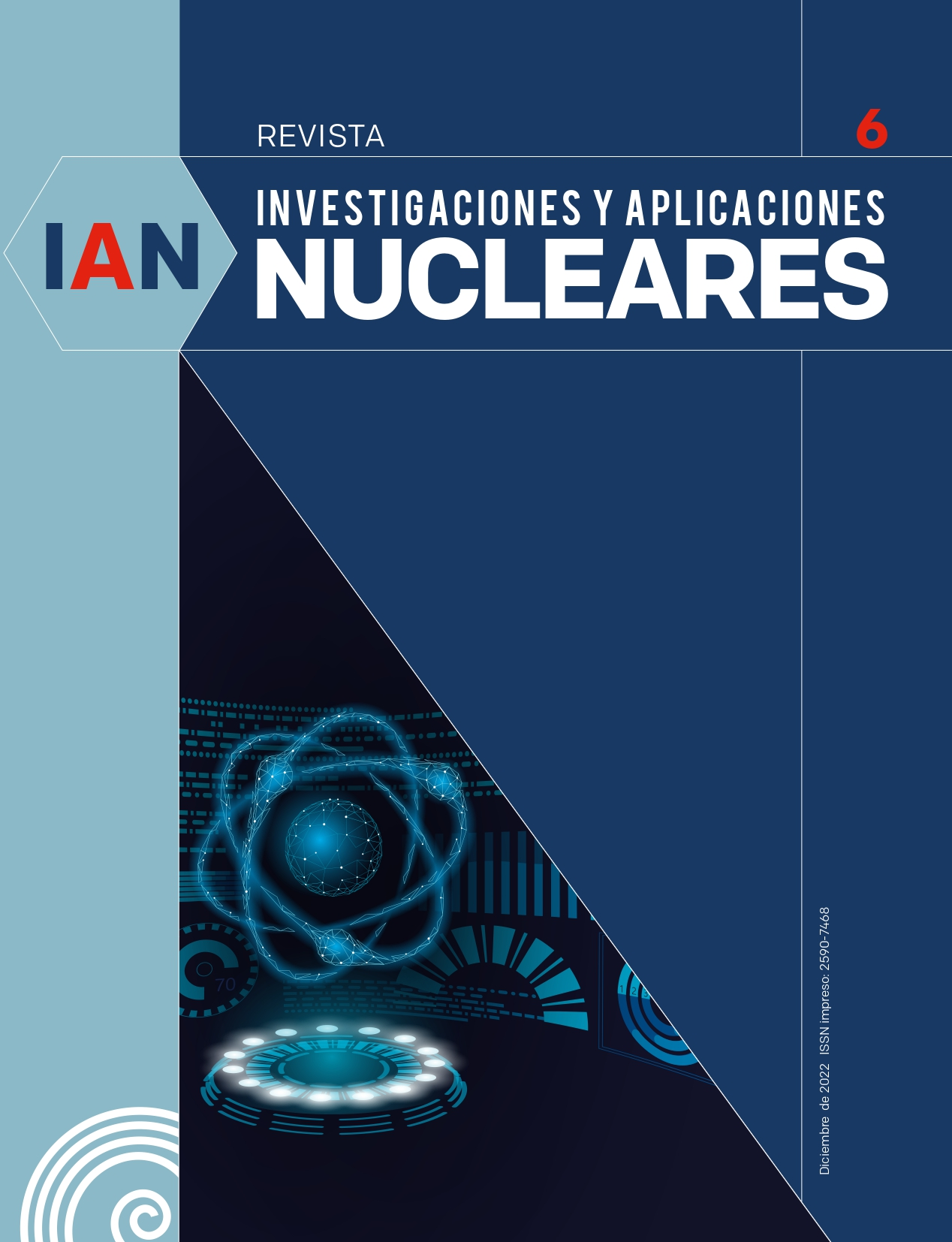Comparison of the risk profile in teletherapy practice of two hypothetical facilities with the risk matrix method
DOI:
https://doi.org/10.32685/2590-7468/invapnuclear.6.2022.614Keywords:
safety assessment, risk matrix method, teletherapy, radiological safety, riskLicense
Copyright (c) 2022 Servicio Geológico Colombiano

This work is licensed under a Creative Commons Attribution 4.0 International License.
Downloads
How to Cite
Issue
Section
Published
Abstract
Here, the aim is to compare the risk profile of the teletherapy practice technique, three-dimensional conformal radiotherapy (3D-CRT), of two hypothetical centers with the same installation that have different human resources, specifically in the number of medical physicists, radiation oncologists and radiotherapy technologists. Center 1 has limited human resources, and center 2 has sufficient human resources. The risk matrix methodology was used with the application of the radiotherapy risk assessment system (SEVRRA in spanish) software to evaluate the risk profile of both centers. The independent verification barrier by a professional peer impacted the risk profile of center 1 with respect to center 2 in 12 initiating events with high risk, and this level of risk was null in center 2. As a complementary study, the elimination of some safety functions associated with the increased workload in center 1 was evaluated, which doubled the number of initiating events with high risk. The risk matrix as a method of analysis for teletherapy practice makes it possible to anticipate the possible events that could lead to an accident and, as a result, presents a risk profile, the analysis of which would allow the identification of technical-administrative priorities necessary for risk mitigation, guaranteeing patient safety.
References
Aspectos físicos de la garantía de calidad en radioterapia: protocolo de control de calidad, Viena: Organismo
Internacional de Energía Atómica (OIEA), 2000.
D. E. González López y P. Borjas Hernández, “Evaluación de riesgo en el paciente de radioterapia: Hospital
V. I. Lenin de Holguín”, Nucleus, n.° 57, pp. 26-30, 2015.
Protección radiológica y seguridad de las fuentes de radiación: Normas básicas internacionales de seguridad,
Austria: Organismo Internacional de Energía Atómica, 2016.
M. S. Huq, B. A. Fraass, P. B. Dunscombe et al., “The report of Task Group 100 of the AAPM: Application
of risk analysis methods to radiation therapy quality management”, Medical Physics, vol. 43, n.° 7, pp. 4209-4262, 2016. https://doi.org/10.1118/1.4947547
Resolución 482 de 2018, por la cual se reglamenta el uso de equipos generadores de radiación ionizante, su control de calidad, la prestación de servicios de protección radiológica y se dictan otras disposiciones. [Internet]. Bogotá: Ministerio de Salud y Protección Social. Disponible en https://www.minsalud.gov.co/NormatividadNuevo/Resolución482de2018.pdf
Foro Iberoamericano de Organismos Reguladores Radiológicos y Nucleares, “¿Qué es SEVRRA?”. [Internet]. Disponible en https://www.foroiberam.org/sevrra
Análisis probabilista de seguridad de tratamientos de radioterapia con acelerador lineal, Viena: Organismo Internacional de Energía Atómica (OIEA) 2012.
Case studies in the application of probabilistic safety assessment: Techniques to radiation source, Viena: International Atomic Energy Agency (IAEA), 2006.
Aplicación del método de matriz de riesgo a la radioterapia, Viena: Organismo Internacional de Energía Atómica (OIEA), 2012. Disponible en https://www-pub.iaea.org/MTCD/Publications/PDF/TE_1685_S_CD/PDF/Appendix.pdf
S. A. Rubiano, Evaluación de seguridad del procedimiento de radiocirugía con el método de matriz de riesgo, tesis de maestría, Facultad de Ciencias, Pontificia Universidad Javeriana, Bogotá, 2021. Disponible en https://repository.javeriana.edu.co/handle/10554/55984
Lessons learned from accidental exposures in radiotherapy, Viena: International Atomic Energy Agency (IAEA), 2002.
D. C. Herrera, M. Arciniegas Álvarez y J. A. Gómez, “Resultados e interpretación al aplicar la técnica de matriz de riesgo en braquiterapia”, Revista Investigaciones y Aplicaciones Nucleares. [Internet]. n.° 3, pp. 5-11, 2019. https://doi.org/10.32685/2590-7468/invapnuclear.3.2019.506
Setting up a radiotherapy programme: clinical, medical physics, radiation protection and safety aspects, Viena: International Atomic Energy Agency (IAEA), 2008.
El físico médico: criterios y recomendaciones para su formación académica, entrenamiento clínico y certificación en América Latina, Viena: International Atomic Energy Agency (IAEA), 2010.







